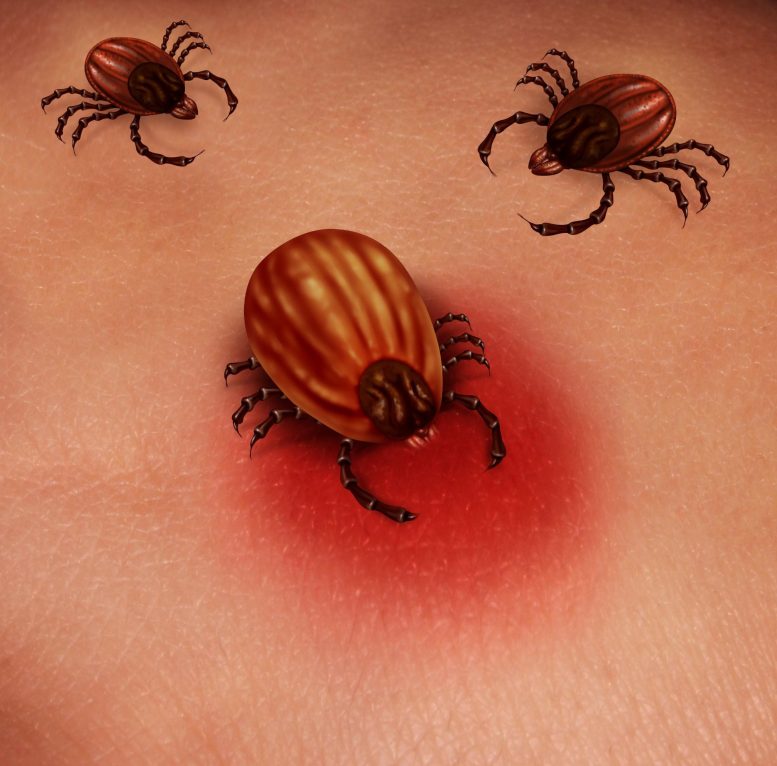
Over the past five decades, the U.S. has seen a dramatic rise in tick-borne diseases, prompting urgent calls for innovative solutions from scientists at Yale. Their review highlights the rapid spread of these diseases, attributable to factors like increased deer populations and forest regrowth, and the dominance of the deer tick in transmissions. Traditional vaccines have had limited success, leading researchers to explore new strategies targeting tick-feeding processes and alert mechanisms. The proposal includes expanding these tactics to wildlife, necessitating a collaborative, multidisciplinary approach similar to the Manhattan Project to effectively combat this public health threat.
The surge in diseases transmitted by ticks throughout numerous regions of the United States in the past fifty years poses a significant threat to public health, necessitating innovative solutions, caution a team of scientists from Yale. In a review article, they outline why the stakes are so high and describe some potential solutions.
Possible solutions include a new class of vaccines for humans, including vaccines being developed at Yale, and even for the animals that carry the ticks.
The article was recently published in the journal Science Translational Medicine.
The research team was led by Sukanya Narasimhan, associate professor in Yale’s Department of Internal Medicine (Infectious Diseases) and Erol Fikrig, Waldemar Von Zedtwitz Professor of Medicine (Infectious Diseases) and professor of epidemiology (microbial diseases) and microbial pathogenesis.
Historical Context and Current Scenario
The public health threat, they say, is escalating rapidly. It wasn’t until 1982 that the threat of tick-borne diseases was recognized after a bacterium transmitted by ticks caused an outbreak of arthritis-like symptoms in children in Lyme, Connecticut. And even then, known cases of the disease were extremely rare.
Today an estimated 490,000 people in the United States are infected annually by tick-borne diseases such as Lyme disease, an increase that researchers say has been fueled by the return of formerly depleted forests and a dramatic increase in populations of tick-hosting white-tailed deer.
The threat has also spread from isolated areas near the New England coastline into the U.S. Midwest and other parts of the country since the cause of Lyme Disease was identified four decades ago. A single tick species – Ixodes scapularis, commonly called the black-legged or deer tick — accounts for 97% of tick-borne diseases in the United States.
Challenges and Diverse Pathogens
To date, most efforts to combat tick-borne diseases have concentrated on developing vaccines that target Borrelia burgdorferi, the bacterium that causes Lyme disease. These efforts, however, have had limited success and do nothing to combat other pathogens that can be transmitted by ticks, the researchers say.
For example, deer ticks can also transmit six other human pathogens, including the Powassan virus — named for a town where it was first identified in a young boy who eventually died from it — which kills 10% of infected people and causes permanent neurologic damage in half of the cases. While still rare, Powassan cases have increased forty-fold in the last two decades.
In response to this rapid rise of a host of tick-borne diseases, Fikrig’s lab at Yale is developing vaccines that combat a variety of infections by thwarting the ability of ticks to feed and even alert human hosts when they have been bitten by a tick.
“If we can keep ticks from feeding, we can control Lyme and other diseases as well,” said Narasimhan, first author of the new report.
Previous research has shown that multiple exposures to tick bites can increase resistance to tick-borne infections. At Yale, Fikrig’s lab capitalized on this insight. In a previous study, the lab showed that a vaccine containing a cocktail of tick salivary proteins can impair tick feeding and even increase the chances that a person will recognize that they’ve been bitten, which can in turn prompt rapid tick removal and a reduced likelihood of infection.
Broader Vaccine Strategies
Durland Fish, professor emeritus of epidemiology (microbial diseases) at Yale School of Public Health and a co-author of the article, argues that such a vaccine could also be delivered orally within bait that would be consumed by deer. Ideally, he said, ticks would then be unable to feed upon the blood of that deer, which in turn would reduce tick populations and the risk of disease for humans.
“Deer are the keystone host for deer ticks,” he said. “They do not exist in areas where there are no deer. I think this should be the Manhattan Project for tick-borne diseases.”
Similar strategies have already been carried out to prevent raccoon rabies in the U.S. and fox rabies in Europe, and also to protect cattle against tick-borne disease.
“Toward this goal, we must have a multidisciplinary, One Health approach [an integrated approach that balances the health of humans, animals, and ecosystems] that will harness the vision of molecular biologists, entomologists, ecologists, epidemiologists, physicians, veterinarians, and vaccinologists,” the authors conclude.
Reference: “A ticking time bomb hidden in plain sight” by Sukanya Narasimhan, Durland Fish, Joao H. F. Pedra, Utpal Pal and Erol Fikrig, 18 October 2023, Science Translational Medicine.
DOI: 10.1126/scitranslmed.adi7829









Tick Collars for Deer. Capture, collar, release.
Rather than put the entire population on drug therapy following infection why not kill off all the stupid deer?
Google: Tick Sticks. It has been known for years that if you scatter stuffing from old mattresses that have been sprayed with Pyrethrum, rodents take them to line their borrows, the ticks die and never get to the deer. Where have you people been?